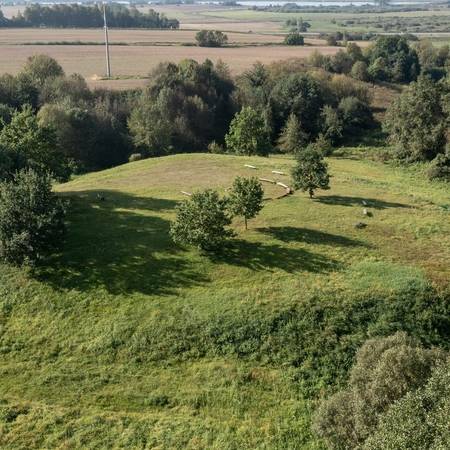The mound, also called Pilimi, can be found slightly southwest of Kalniniai Mijaugoniai village (Gilučiai sen.), 0.4 km north of the Vilnius-Kaunas highway.
Kalniniai Mijaugoniai mound and ancient settlement (uk 24496) are included in the Register of Cultural Values and together form a complex. The mound is located on a separate hill, the site is oval, elongated in the north-west-southeast direction. At the top is a 55 m long northeast. - in the direction of pv and 43 m wide a lot at the end, descending and tapering in the direction of pv. Her this year at the end there used to be a rampart plowed. Dimensions / area: 200 m long - in the pv direction and up to 150 m wide. On the eastern edge, the embankment is dug for the entrance. Overgrown with deciduous trees, which during the management of the mound begin to cross. In the northern, north-eastern and western foothills there is a foothill settlement on an area of 3 ha. Smooth and rough pottery was found in it. The mound dates back to the 1st thousand. in the middle - II thousand. the beginning. The mound is located on the northwest side of the countryside, on a promontory. The site at the top is 55 m long and 43 m long. width. I thous. after Kr. here stood a wooden castle belonging to the eastern Baltic tribe. Shards of molded pottery were found in the mound. 1971 the mound was explored by the Institute of History. 1992 included in the list of historical and cultural monuments, and in 1999 declared a cultural monument.
At the northern foot of the mound is a protected area of the old settlement (1st millennium). This Stone and Iron Age settlement was discovered in 1995. Smooth and rough, molded, engraved pottery, broken stones, as well as products of the late Neolithic flint were found here. 1998 the settlement is included in the heritage register, declared a monument in 1999. The settlement together with the mound forms a complex. In this complex in 2011. Exploratory archeological excavations of the visual protection zone were carried out (supervisor - Marius Petkus), but no cultural layer and finds were found during them.




Reviews